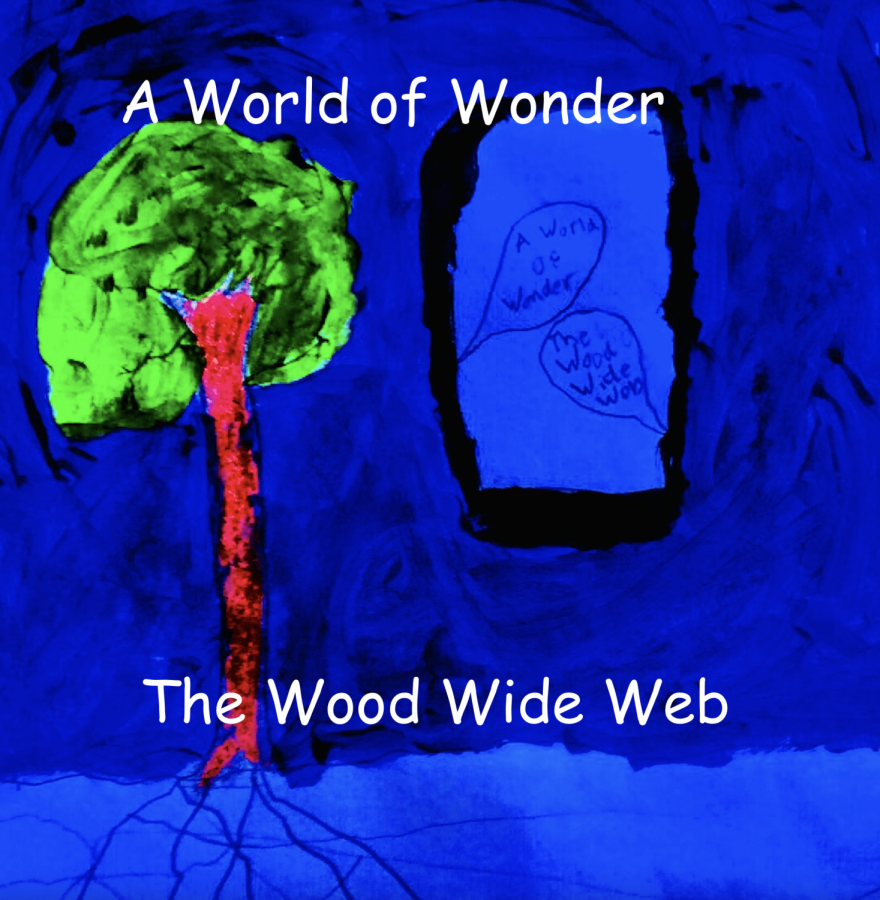A WORLD OF WONDER: THE WOOD WIDE WEB
A wonderful story from our wonderful Earth
Bark! Meow! Chirp! These are all ways organisms other than Homo Sapiens, or humans, communicate with each other. We know many beings that communicate, however, we do not know all of them. Scientists have discovered that trees, you heard me right, trees, communicate with each other. Throughout this article, we will be diving into the wonderful world of the so-called “Wood Wide Web.”
The Wood Wide Web is a network of fungi called mycorrhizal fungi that connect together between the roots of trees. If you saw it from underground, without the soil between everything, it would look a bit like a spider web hanging from the roots, except upside down. If you want to, you could imagine the mycorrhizal fungi like a bridge, with cars representing chemical or hormonal surges driving across the bridge from one tree city to another. Trees push chemical, hormonal, and electrical surges through the fungi to other trees; this “Nature Network” allows them to provide information about weather and species eating trees throughout the ground. They can even send nutrients to a tree in danger! For example, a tree being eaten could tell the other trees to produce a chemical that repels the creature and send them its nutrients, as it will not need it. This feature of nature is flowing with beauty and pure amazingness.
“The Wood Wide Web is nearly 500 million years old,” speculates BBC News. It was first discovered in 1997 by Suzanne Simard in her Ph.D thesis. The specific type of fungi that connects it is ectomycorrhizal fungi (EM). It mainly thrives in cool areas, but with the rapidly warming temperatures, arbuscular fungi (AM) is taking over the EM. Arbuscular fungi is adapted to warmer and damper regions, and it impales the host tree’s roots instead of wrapping around them. Mycorrhizal fungi are symbiotic with plants, but because AM penetrates the roots, the connection between trees is lost. This could be very dangerous, because the trees would not know when other trees are in danger, and they could not send nutrients to others. Global warming is destroying the Wood Wide Web, and everyone needs to do their part to save this important part of nature.
What is your favorite part of nature? The Wood Wide Web? Something else? Here is what some iUPers think: Marcus Bamber says, “Being around the vibrant greens from the shrubbery and blues from the skies brings a sense of tranquility to life that is quite irreplaceable.” Makenna Horne says, “I like the feeling of serenity that nature gives me. I love mountains and pretty bodies of water. I also love when the sunset makes the sky pretty.” Finally, Yadiz Martinez says, “My favorite part of nature is the feeling of calmness and absolute beauty when the moment is just right. Like near a river, when the sun’s setting, etc. It really is wonderful.”
In conclusion, the Wood Wide Web is a wonderful part of nature that many people may not know about, but it is very important to trees. Perhaps if we all do our part, we can save it!
Works Cited

Hi! I am Will Faulkenberry, and I'm in 6th grade at iUP! This is my second year in iUP and second year in iHoot! I enjoy writing, reading, and doing experiments!...







